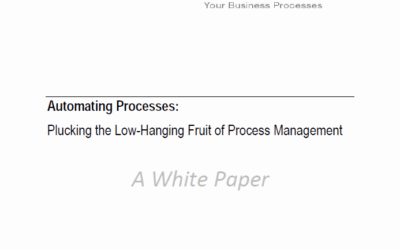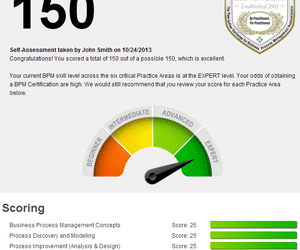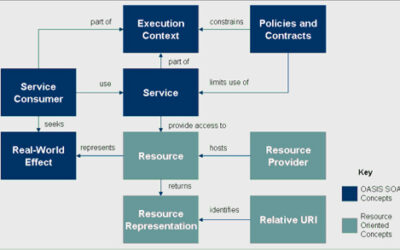Much of the discussion about collaborative methodologies like Lean, Agile and Design Build has, in the past been about creating continuous flow of value, team dynamics, technical practices and even the project management techniques required to get effective and acceptable products delivered and/or deployed. What teams in all environments quickly find out, however, is they are dependent on other organizational dynamics outside their purview, like securing customer involvement, issue escalation, resource allocation, even facility management becomes important.
Articles by: BPMInstitute.org
BPMS Watch: Five Things to Love About BPMN 2.0
BPMN 2.0 is almost here. If all goes as planned, it will be voted on by OMG members in June. Assuming it passes, that doesn’t mean BPMN 2.0 is officially adopted and available in commercial tools, just that it has entered the “finalization” phase when tool vendors can start building it in. Even though the diagram notation of BPMN 2.0 appears little changed from previous versions, it represents a big step forward.
The Maturity Level of a Process as a Principle Factor for Process Automation (First Pillar)
“A high level of process maturity is considered a fundamental pillar for comprehensive process automation and successful future implementation. The process operation and the time this process has been utilized by the business must be well understood by the person or people who are going to automate said process. Considering implementing a theoretical process or a process that possesses a low level of maturity is likely to result in failure and/or extended execution time and/or a high investment in cost and resources.
Aligning Strategy & Execution
Strategy [strat’-i-jee]: a plan, method or series of maneuvers or stratagems for obtaining a specific goal or result. Execute [ek’-si-kyoot]: to produce in accordance with a plan or design. Clearly, the two ideas are closely related; one involves setting a plan and the other involves putting the same plan into motion. Simple enough. Yet, why is it that so many companies fail to make the connection?
In my experience, most organizations are very adept at planning.
Automating Processes: Plucking the Low-Hanging Fruit of Process Management
Business Process Management can conjure up images of tremendous complexity, months of planning, committees, meetings, boxes, arrows and squiggles depicting business processes. While BPM can be that complex, it needn’t be. You can move, and quickly, to pluck the low hanging *process automation) fruit for your company. This white paper offers some guidance, things to ponder, consider and act on as you contemplate how to automate your business processes.
BPM Skills Self-Assessment
Aspiring and veteran BPM practitioners alike can use this self-assessment to determine current strengths and weaknesses across six critical Practice Areas. It will also help you determine your odds of obtaining a BPM Certification.
Please note: The assessment has been updated and is no longer presented as a webcast. Please visit the link below to take the assessment.
Are you just getting your feet wet in Business Process Management and want to know where to start? Do you have some experience but want formalized training?
BPMInstitute.org’s training program may be the right choice for you.
Training is essential to maintain your edge and get ahead in today’s difficult economic times. It’s becoming more and more important to differentiate. Becoming a process thinker will allow you to achieve both of these objectives. With so many BPM course options, what is a fast and efficient way to find out where to begin?
Resource Oriented Architecture
According to a 2008 Gartner Survey1 there has been an increase in the number of organizations implementing web services using Representational State Transfer (REST) and Plain Old XML (POX).
BPM and Software as a Service
Today’s economic pressures are resulting in an increasing scrutiny on IT budgets and how to achieve the best return on investment. IT project portfolios are constantly evaluated by the CIOs in light of new budgets and constraints. Clearly IT spending is on the fall, significant budgets cuts are on way, and new initiatives are impacted. BPM initiatives that had initially made their way into the portfolio are now being re-evaluated given the upfront capital cost of procuring Hardware and software.
Fly-by-BusinessDrivers – Agile Supply Chain Organization with Business Drivers Embedded BPM System
As much as business drivers cannot be divorced from an effective and successful supply chain, the same is true for Business Process Management (BPM) that could help raise the bar for supply chain.
Supply chain in Organizations are very complex with numerous distribution types and channels, in house and outsourced factories, third party warehouses, logistics and suppliers with varied contracts, etc. Enterprise Resource Planning (ERP) software enabling supply chains greatly increase the availability of current information.
Integrated Business Management in the Process Age: Creating an Agile Business Management Paradigm
In the transition from the Information Age to the Process Age, we need new thinking and methods to design products and services for the agile business environment. Processes demand a new paradigm that expects more from managing a business and creating solutions than the current information-oriented paradigm. We need methods that are fit for working with processes to replace our methods for working with information, as they aren’t built on the necessary concepts.























